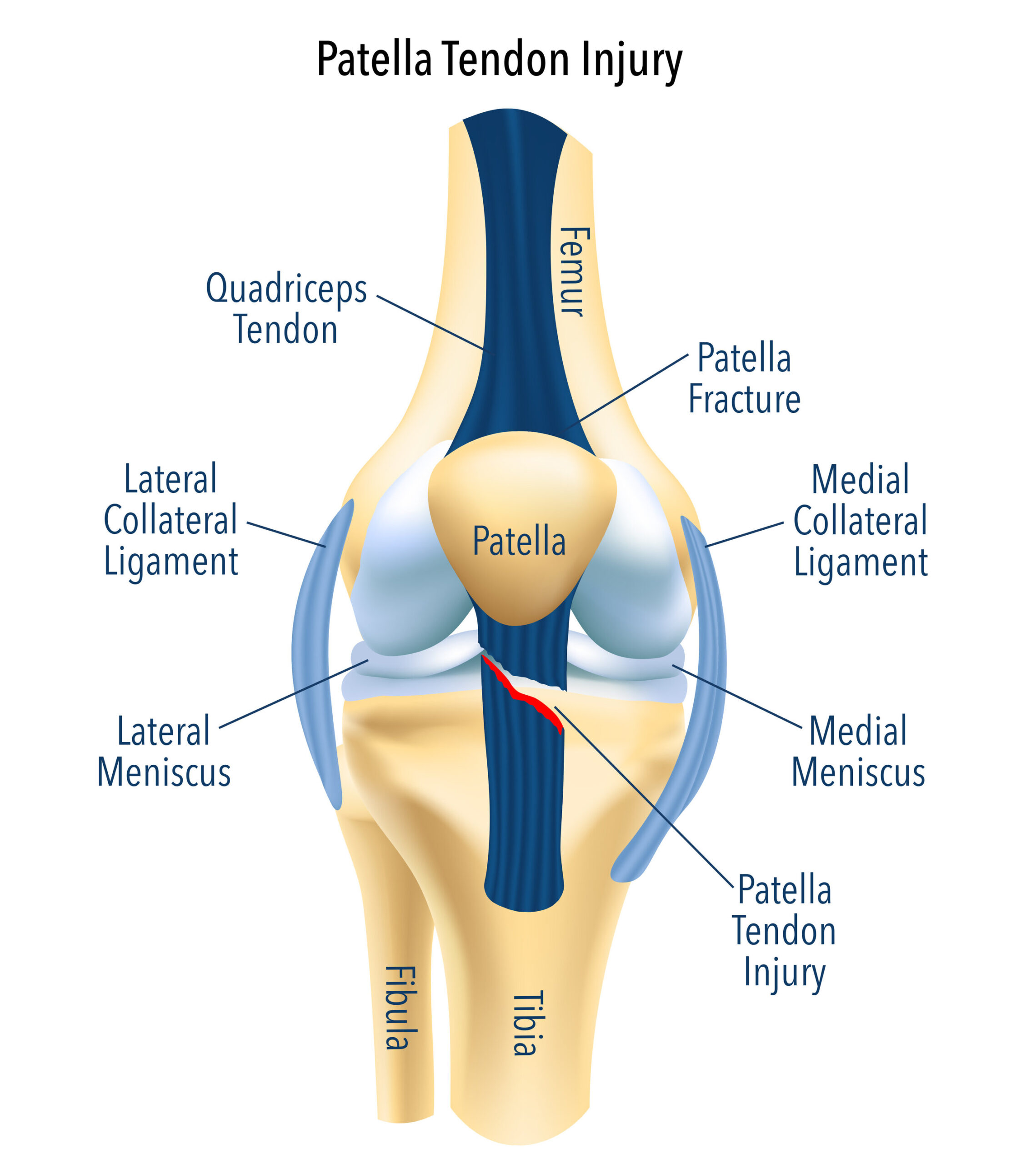Due to its prevalence in leaping activities like basketball as well as runners, this condition is sometimes known as “Jumper’s knee.” During the landing phase of the running stride, the patella tendon, which connects the knee cap to the shin bone, experiences significant impact. Similar to other tendinopathies, tendinopathy develops when a tendon is continually loaded to a level that is above its capacity.
Reactive, disrepair, and degenerate tendinopathy are the three stages, and the stage will decide how much rehabilitation is necessary. It is usually preferable to detect tendinopathy early because this is when there has been the least amount of tendon damage and it is most manageable.
Symptoms
The pain normally develops gradually, is located on the front of the knee right below the knee cap, and is made worse by running, jumping, and landing.
When compared to the other side, the patella tendon can feel painful to the touch and seem thicker.
Pain and stiffness may initially be worse in the morning and at the beginning of the run, but they will subside as you warm up.
If the injury is getting worse, it could hurt during the entire run and afterward.
Causes
The disintegration of the tendon matrix and gradual wear and tear of the tendon caused by repetitive loading are the two main causes of tendon injury. Tendons are designed to bear heavy, repetitive stresses; nevertheless, under certain conditions, the load may become excessive and result in the development of a tendinopathy. These consist of:
- Rapid increase in training volume or intensity
- Working out on a hard surface
- Poor flexibility, especially in the hamstrings and quads
- Biomechanical issues with the lower limbs, such as weak hip stabilisers or excessive pronation of the feet
- Uncomfortable or worn-out shoes
Treatment and Prevention
To stop the advancement of tendon damage, a patella tendon injury should be diagnosed as soon as feasible. However, it is always advisable to have the condition evaluated by a physiotherapist to first ensure the accurate diagnosis is made and then most appropriate therapy may be recommended. Rest, ice, and mild stretching can help alleviate the first pain.
I have extensive skills in the diagnosis and treatment of patella tendon problems and will frequently recommend stretching and strengthening exercises in addition to soft tissue release and taping treatments to address and treat the underlying causes of the ailment. Since eccentric-based strengthening regimens are the most effective treatment for tendon injuries, they will probably be included in the rehabilitation process.
The best therapy is always prevention, so make sure you are exercising wisely by switching up your training surfaces, using shoes with the right fit and cushioning, and stretching and foam rolling frequently. To address any potential issue areas, it is also a fantastic idea to undergo a biomechanical assessment with your physiotherapist.
You can find strength for the quadriceps here :-Running From InjuryMasters Calf ComplexUnlace the Brace
